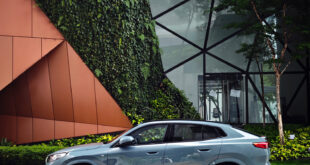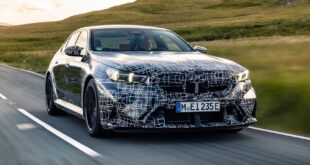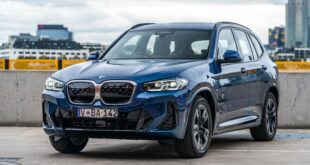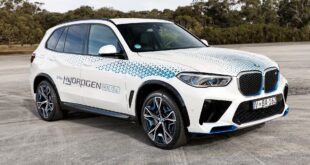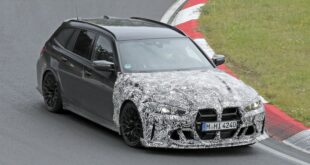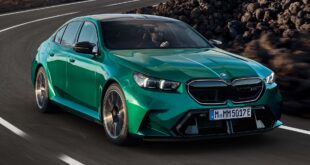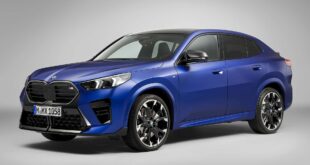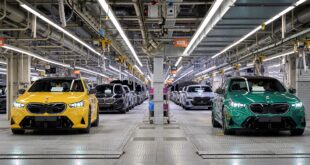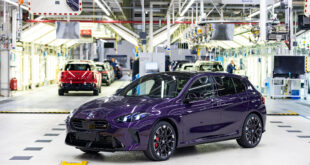 Chris Harris drives the BMW i3 to test if it really drives like a BMW, and if it meets the expectations set by the consumers. He discusses the features of the i3, both good and bad, and ends up not being entirely satisfied with the way it perform. Learn why on the excerpt below:
Chris Harris drives the BMW i3 to test if it really drives like a BMW, and if it meets the expectations set by the consumers. He discusses the features of the i3, both good and bad, and ends up not being entirely satisfied with the way it perform. Learn why on the excerpt below:
Carbon dating
It was the carbon fibre that did it for me. If the i3 was just a lump of steel festooned with posh Duracells I would have stayed at home and done some oversteer, but ever since McLaren launched the MP4/1 in 1981 we have been promised that this remarkable material would eventually be used to make ordinary cars. It has taken 32 years to reach that point. Sitting in a military hangar at BMW’s Maisach driver training site near Munich, the i3’s bare CFRP body structure looks to me like a decent approximation of the future. This isn’t quite the full carbon machine we’ve been waiting for – the powertrain sits on an aluminium rolling chassis containing some gorgeously complicated castings. But the whole thing is beautifully engineered.It is now rather late as I write this, so in the interests of my sanity, I’m going to post the full technical document released by BMW yesterday, comment on the aspects that caught my eye under the skin and tell you what it’s like to drive on the smoothest section of asphalt in northern Europe. For 10 minutes.
Hurry up and weight
The DIN unladen weight of the i3 is 1,195kg. You can view this either as a triumph in the knowledge that a Nissan Leaf is 1,520kg, or a shame that something so physically small should need to breach a ton. The batteries sit under the floor, the motor is at the rear, as is the range-extending two-cylinder motor, should you opt for it. This engine is not connected to the drivetrain, it is merely used to provide energy for the batteries.Weight distribution is a perfect 50/50 for the pure EV version, a little arse-heavy for the range-extender. Power output is rated at 170hp and torque is 184lb ft. BMW claims 0-62mph in 7.2 seconds and a little over 90mph flat out. The motor spins at up to 11,400rpm. Range in normal driving mode is somewhere between 80 and 100 miles. Using Eco-Pro adds another 12 miles, and the same again if you use Eco-Pro+. The range extender is not available at launch, but the nine-litre fuel tank allows the 650cc, 34hp motor to increase range to around 180 miles.
Charging times from a normal plug are around four to five hours, but can be reduced to 30 minutes with a 50kW/h system.
Loss leader
In cutaway form, the first observation is simple: this car must cost serious money to build. Those ally extrusions, the magnesium alloy hanger for the dashboard, the carbon – which is cooked in the US and then shipped back to Europe, the rather lovely aluminium lower suspension arms – all of it yells euros. The tyres are weeny, low-friction Bridgestones just 155 in section and 19 inches in diameter.BMW will not release pictures of the cabin until 29 July, which is a crying shame because I think it’s showroom gold. It re-casts the relationship between driver and controls in the cleverest way I’ve seen in years. People will sit in this car and want it. You push a chunky rotary control forwards to select Drive and then you roll in near-silence. The gearbox is carried over from the Mini E project, the rest of the powertrain is new.
Acceleration is of a quantity that makes you look at your passenger and grin. With rear-engined traction, i3s will be traffic light hustlers by the end of 2013. The first 40mph feels very brisk, the next 20 less so. I didn’t get beyond that but suspect the final 20 might require some teasing. On a trailing, er, throttle, the i3 automatically regenerates bringing added range but also a maximum of 0.166g of braking. BMW makes much noise of how you can learn to coast and drive the car on one pedal. My only observation at this stage would be that the ability to coast tends to be determined by the speed of the traffic around you, and the i3 will be quite out of sync with just about anything else on the road, perhaps making it difficult to perform this trick.
Coasting along
Handling is sprightly and pretty agile, but I just can’t tell you much more than that. Our friend from the chassis department confirmed that urban comfort was a priority over outright handling, and that the Bridgestone-only rubber was designed for minimal friction. The car is set to understeer, with the front still clinging on longer than the skinny footprint would suggest. The steering is a completely new electric system, shared with the new Mini, and is accurate and completely fitting for a car which feels too synthetic from behind the wheel.I think the i3 is a car that will make anyone who drives or rides in it smile. And that probably matters more than anything else. I suspect it might be a little firm on craggy London streets, but on the plus side, I have been assured by the development team that with all the safety systems switched off (sadly not possible in production cars) it will oversteer in the wet. Just thought that needed mentioning.
Launch (i)pad
As you’ll read in the launch materials, BMW has effectively launched a whole EV motoring world on the back of its i brand, much of it linked into a SIM card located in the car which can communicate with either a web browser or a smart phone. Given that BMW took the time to actively monitor the behaviour of motorists using EVs with its Mini E program, you can’t fail to be impressed by the rigour of its research.But there are some fundamental aspects of intended i3 usage that bother me. BMW expects 90 per cent of owners to home charge but in a big cities how many people have off-street parking? It also intends to offer a kind of car-sharing service for those wanting to occasionally do a longer journey – the only trouble here is that the i3 is so damn funky that people will want to show it off to their friends. Having an i3 and not using it all the time is a bit like leaving the family hound at home when you holiday – somehow a bit wrong
 BMW.SG | BMW Singapore Owners Community The Ultimate BMW Community – Established Since 2001
BMW.SG | BMW Singapore Owners Community The Ultimate BMW Community – Established Since 2001

